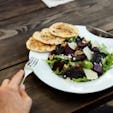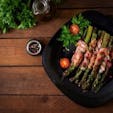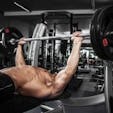If you’ve ever gotten sucked down the rabbit hole of watching training videos on YouTube, you’ve come across Mark Bell. A former elite powerlifter with a 1,080-pound squat, Bell is an internet sensation—thanks to his bone-crunching lifts and video Q&A’s, in which he generously (and colorfully) answers fitness questions.
Now retired from competition, Bell, 41, is a prolific fitness-equipment inventor and entrepreneur, focused on paying it forward to the younger generation as part of his ongoing mission to “make the world a better place to lift.” And he doesn’t just want to help guys who aim to get “jacked and tan,” as he says, but everybody who’s willing to work hard to build a better body and be healthier. We sat down with The Meathead Millionaire during his last visit to Onnit HQ to talk about strength, nutrition, and the latest iteration of his best-selling invention, the Sling Shot.
Mark Bell Q&A: “Bodybuilding Is A Great Base”
Onnit: You’ve retired from competitive powerlifting. What is your goal now?
Mark Bell: My main thing is just to teach people about fitness, and that you don’t need to be a fitness freak to enjoy the benefits of training. I think people stop before they ever get started because they get hung up on all the barriers to entry. They think, “I should start on Monday but I have ’this’ going on that day or ’that’ thing to do so I can’t.” Then the cascade of excuses comes down.
It doesn’t have to be that hard. You could take an exercise class at a gym like Onnit one day, and the next day just take a walk. Then lift weights or play a sport the day after that. You can enjoy the benefits of health and fitness without being totally submerged in it like I was. It’s really just about setting certain habits.
What are some healthy habits you think everyone can establish?
Start by going on a 10-minute walk every day. There’s not a person on the planet who doesn’t have 10 minutes. People have meetings and phone calls to make¦ well, you can still do those on a walk. Convenience and consistency go hand in hand. When you can do something easily, you’re able to replicate it, and then you’ll end up doing it more often.
What are your training goals now?
I still want to be strong and be able to represent what I do and my company [MarkBellSlingShot.com]. I’ll always lift heavy. Heavy squats, benches, and deadlifts will always be sprinkled into anything I do. But I’m not being competitive anymore. The thing of “have to” is gone for me now. I don’t have to do that extra set or load more weight. My goal currently is to continue to get in better shape. I’m taking my time with everything. I weigh 250 now and I’d like to get down to 230 and be just as strong, but I’m not in any hurry to weigh 230.
Have you modified the way you do the big three lifts over the years to account for age or injury?
Not really. I just spend more time warming up. I’ll either warm up with the exercise itself or I’ll do what I call working out backwards, where I do a lot of assistance stuff in preparation for the big lift. If it’s a lower-body day, maybe I’ll drag a sled first before I squat. If it’s an upper-body day, I’ll do lat-pulldowns, curls, or triceps pushdowns first before I bench. Or I might do incline bench presses with 100-pound dumbbells for three sets of 15 before the main workout. When I get to the point that I can still bench the same weight I was doing without doing the incline presses beforehand, I know I got stronger. So it’s just another way to train strength.
I work on more conditioning these days too. I superset stuff more. I do conditioning drills with the Xpo Trainer sled, which is like a Prowler with wheels on it. It offers levels of resistance so you don’t have to load it up with weight [see Mark get a demonstration from the Xpo’s creator HERE.] I do battle ropes and the Airdyne bike too several times a week.
There’s a lot of debate over what assistance exercises are best for building up the squat, bench press, and deadlift. Do you think assistance work should be similar to the lift you want to improve or should it just build muscle?
I think building muscle is a forgotten element of fitness. Good old-fashioned bodybuilding still has a place, and it’s a great base for any training goal you want to work toward. People who do bodybuilding exercises like overhead presses, rows, and even curls tend to be more well-rounded than powerlifters or weightlifters. They tend to have fewer injuries and also seem to hold on to their athleticism better.
I think it’s because the higher rep ranges you use in bodybuilding don’t stiffen and damage the tendons and ligaments as much as what competitive lifters do. Because they’ve built all this muscle mass, bodybuilders can get stronger quicker. They can shift gears and go and hit a heavy lift when they want to. A good example of that is John Cena. He’s been bodybuilding since he was a kid. Now he does some Olympic lifting and other exercises, but he has such a strong bodybuilding background, he was able to build such a dense physique, that now he’s able to handle a lot of other stuff that’s come along—including pro wrestling.
So bodybuilding is a great base. Powerlifting and weightlifting are great too, but there’s so much maintenance that goes into them, trying to counteract the problems, the injury-potential, they present. But let me be clear when I say “bodybuilding.” I don’t mean being a competitive bodybuilder. Bodybuilding is very difficult to compete in but it’s not hard to practice. There’s a difference between getting on stage and doing it just to build muscle.
A lot of lifters turn to equipment like belts and knee sleeves. When do you think it’s appropriate to start putting gear on?
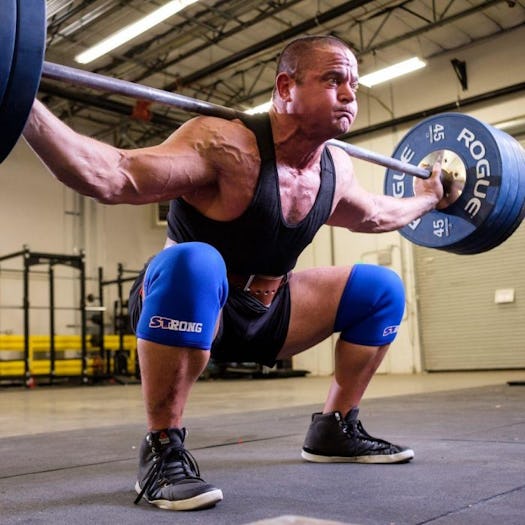
Whether it’s a belt, knee sleeves, or a Sling Shot, those aren’t things you need right away. People got strong and stayed healthy long before those things existed. They’re tools for when you’re starting to feel banged up and you want to ensure that you don’t get more hurt. That’s when it’s time to start purchasing elbow sleeves and wraps and so on—when you’re starting to move heavier weight and feeling it.
Here’s the thing. Heavy weight is not relative like people think it is. I don’t care how strong you are—500 pounds is still 500 pounds. It’s still fucking heavy. So when you get to the point where you’re moving weight like that, the smart thing is to protect yourself before you wreck yourself. I like knee sleeves just for the warmth factor. They can actually improve your squat range of motion. They make you feel safer and give you some kinesthetic awareness of your knees. You can go a little deeper because you’re more comfortable.
What tips do you have for buying gear?
It depends on what you’re doing in the gym. If you’re Olympic lifting, you want wrist wraps that are a little more pliable, because you need to have a little play in your wrists to catch the bar in the rack position and to press overhead. The same goes if you’re a CrossFitter. If you’re powerlifting, you want stiffer wraps. They should feel almost like a cast because you want as much stability as possible.
I think some people assume that if they do use a product it’s a crutch. Like it’s doing the work for them. But it’s not. It’s a tool. With something like the Sling Shot, I’ve used it for weeks on end for bench and it’s never made me weaker. It’s only made me stronger. It’s the equivalent of a lifting belt.
You recently designed a new Sling Shot. Tell us about it.
I’ve always tried to show people that the Sling Shot can be helpful to those who have trouble with pushups, but the Sling Shot usually sells to people who bench 300 pounds or more. Those people don’t have any problem doing pushups. So I designed a Sling Shot that’s more for beginner and intermediate lifters, and females who struggle with upper-body strength. It’s double-layered in the middle and a little shorter than a regular Sling Shot so it offers more support. It’s called the Sling Shot Sport, and it’s specifically designed with pushups in mind. But you can still bench with it and do other movements.
I’ve had several women go from not being able to do one pushup to doing several over the course of a few weeks. Once they get in the six-to-eight rep range using the Sling Shot, they can do regular pushups without it. You’re still working hard; the Sling Shot just provides some assistance. The problem with the pushup is it’s not just about the strength of your arms and shoulders. You need the core on board. The Sling Shot supports your chest so your core can still work hard but it’s not challenged by the weight of your whole body. Your muscles will get more time under tension using the Slings Shot, and that leads to more muscle.
You’ve been experimenting with some Onnit equipment lately too. What has your experience been?
The last time I was here you guys gave me a five-pound club. That really helped open up my shoulder, and I’ve taken some of the principals I learned here and talking with Esik [Onnit Steel Mace Senior Coach Erik “Esik Melland] to heart. I’ve been using the mace too. A lot of the movements he was showing me felt foreign at first—having to brace the core with the arms overhead and making continuous motions. But then I realized, “Hey, this feels a lot like bracing for the squat, for the bench press, for the deadlift¦” I suddenly understood how keeping that structural alignment translates to everything we do. So I think getting a steel mace is a great idea, especially if you’re a powerlifter.
“I’ve had several women go from not being able to do one pushup to doing several over the course of a few weeks. Once they get in the six-to-eight rep range using the Sling Shot, they can do regular pushups without it.”
Most powerlifters are really locked down in their lats. If you had a 10-, 15-, or 20-pound mace and just dropped it behind your back like a back scratcher from time to time, you could really get your elbows up and stretch the lats out. That would help a ton with external rotation. I tore my pec several times just from being so interiorly rotated. My shoulders were so forward it put a lot of stress on my pecs. If I had been using the mace years ago I might have avoided those problems.
Now I want to be able to do all the movements that I couldn’t for a long time. For years I wasn’t able to do an overhead press. My arms would move too far forward and pressure the shoulder joints. You don’t want to be limited like that. You want your body to move the way it needs to.
I also wasn’t doing any lunges or single-leg stuff at all before I visited Onnit, and I left thinking I should focus on those things more. Meeting you guys had a huge impact.
Aw, you’re making us feel warm and fuzzy. Let’s talk about nutrition. You’re known for experimenting with low-carb diets. How do you use carbs to support exercise but stay lean?
When it comes to strength and performance, I think you need carbs. How many, I guess, is the question. For myself as a competitive powerlifter, I was not on a specific diet. For years, I tried to eat a lot of meat and carbs to keep my body weight up. As I shifted gears to be more fit, I switched to a more keto diet. But there is no better energy source than a carb. It acts much faster than fat. Carbs are fast energy and help hydrate your muscles. You will feel stronger with carbs than without.
If we’re just talking about general health, fitness, feeling better, and thinking more clearly, that’s a different ball game. That’s why I’ve always liked the keto diet and I’ve used it on and off. I really like it as a reset—Mark Sisson wrote a whole book about that [The Keto Reset Diet]. How long does that take? I think two or three months. I think even if you’re powerlifting it’s a good idea to go off carbs for a while so that when you go back to them they’re more effective for you. You can get yourself leaner and then bring your body weight back up and you’ll be a little leaner every time you do it. That’s what [World’s Strongest Man competitor and Game of Thrones star] Hafthor Bjornnson did. He didn’t do a full keto diet but he ate a small menu of foods and then added more back in.
But remember that carbs aren’t the enemy completely. Rice, fruit, and potatoes are good choices. Cereal and donuts, on the other hand, are never optimal.
What is a typical day for you, nutrition-wise?
My entire day is low-carb until I train. I’ll eat some carbs around a workout, in the form of rice or orange juice. I like to get them in after training, but I don’t think when matters that much. With juice it makes sense to have it post-workout because it hits you pretty fast and I think at that point your body is starving for nutrients.
I think people also overestimate how hard they work. They think they trained so hard that they need to take in 400 grams of carbs or something after a workout when 100 or 200 is enough.
Visit Bell at MarkBellSlingShot.com and follow him on Instagram at @marksmellybell. See the beach-muscle workout he designed exclusively for Onnit HERE.
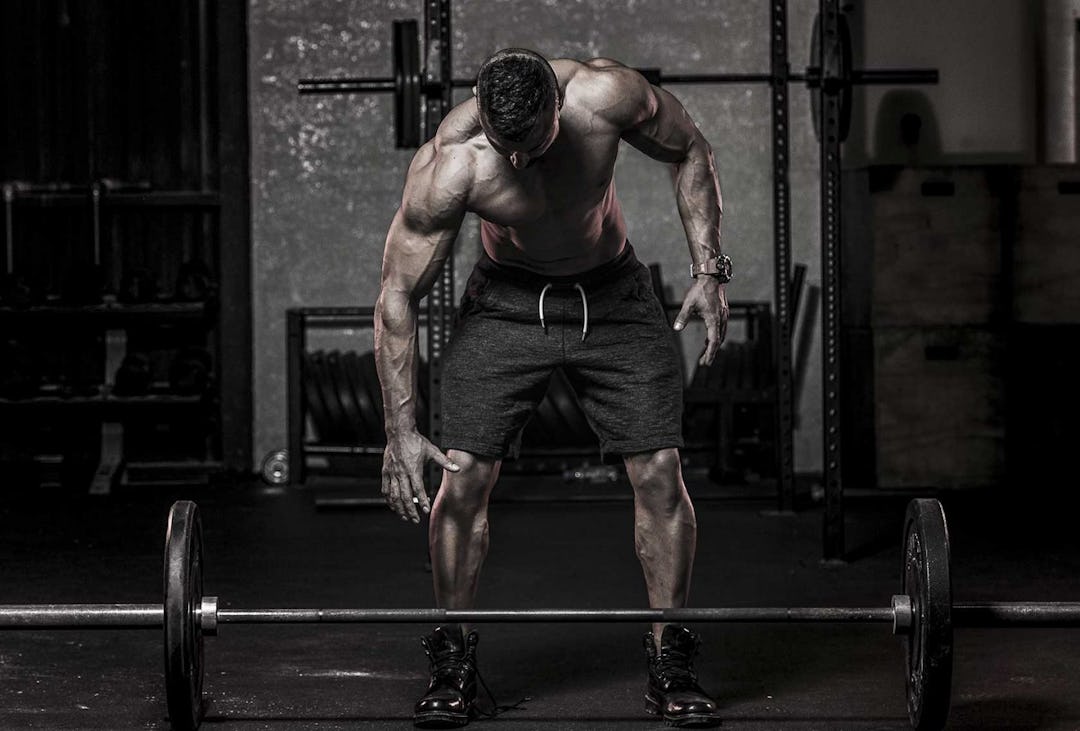
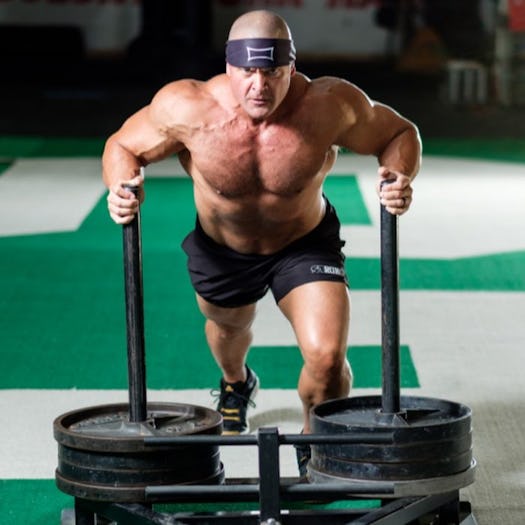
)
